Free and open to the public. Thursday to Sunday, 10AM—6PM.
150 Camp St, San Antonio, TX
Free and open to the public. Thursday to Sunday, 10AM—6PM.
150 Camp St, San Antonio, TX
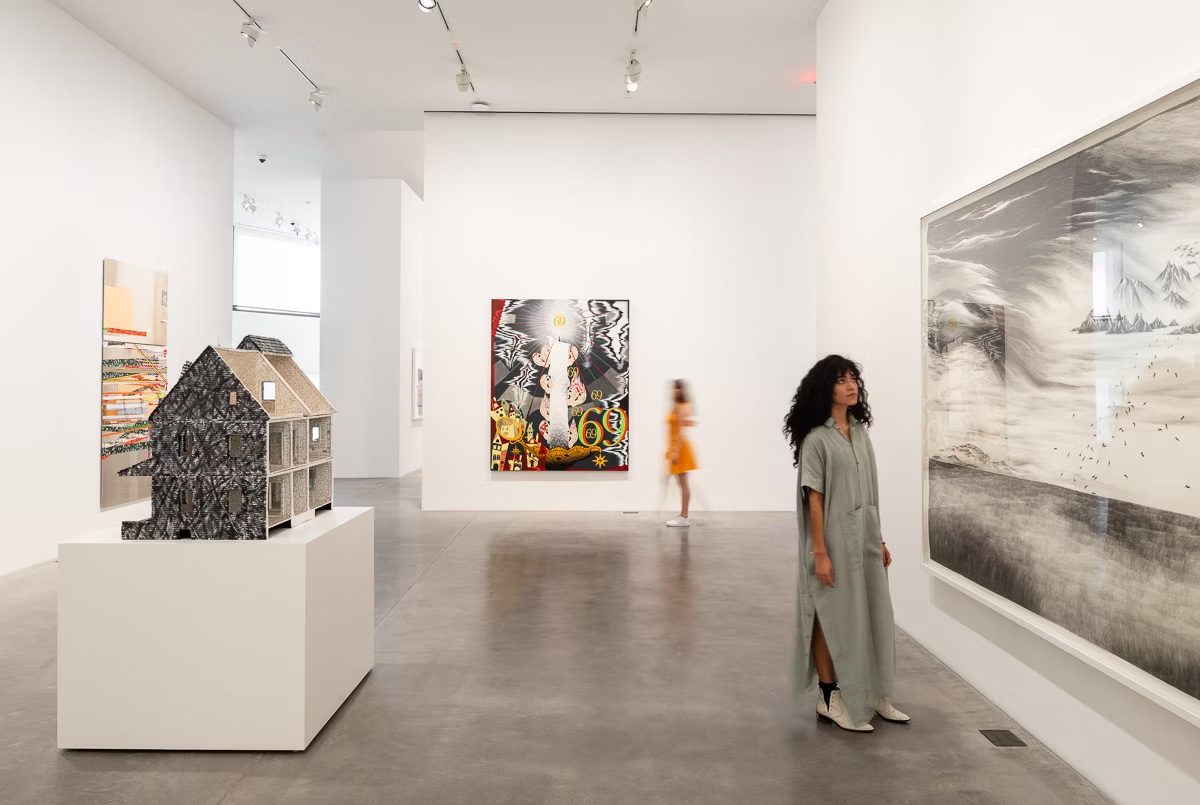
Drawn from complex and personal holdings of the Linda Pace Foundation Collection, the artworks in Waking Dream reflect themes and sensibilities surrounding notions of home, the creative self, vulnerability and resilience. Imagery ranges from the banal to the cosmic— shelves of books and bags of trash, on the one hand, to depictions of the sun and moon, on the other. As in dreams, the images are recognizable, yet altered and amplified whether through a single color, an unexpected material, or a shift in scale. Such is the collection of Linda Pace: a resonant bridge between the prosaic and the profound and an invitation to reflect on the connections between the two.
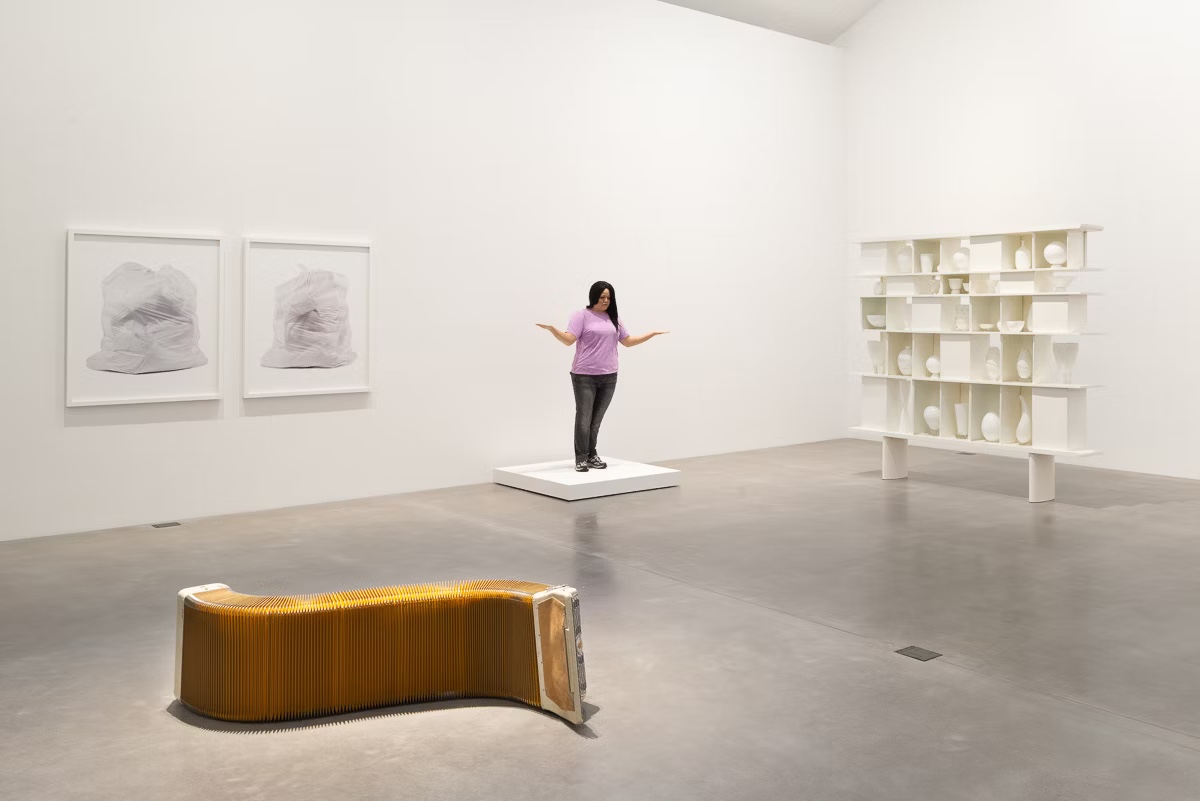
At the heart of Ruby City is the commitment to preserve the legacy of Linda Pace. With a number of works by Pace featured in Waking Dream, viewers are able to see her artwork alongside many of her peers, understanding the strong ties Pace shared with the artists in the collection. Ruby City continues to maintain those close connections, frequently integrating select works by Pace into the galleries.
Upon arrival, visitors are welcomed by Sylvie Fleury’s illuminating neon sculpture, which implores them to “be amazing.” Nearby, Linda Pace’s mixed-media wall piece uses color to corral an unruly mess of souvenirs and tokens into a single field of personal associations. Alternately, Diana Thater, whose film and videos ruminate on the spectacle of the natural world, represents the sun’s orb through the RGB palette of video light. Joyce J. Scott’s blown-glass nativity presents a crimson figure, suggestive of both a seated Buddha and African sculpture, delivering forth a clear glass infant. The fantastic scene links the power of motherhood to spiritual and elemental references. Overhead, Terry Adkins fans a stack of cardboard sewing patterns, gathered from San Antonio’s defunct Finesilver Manufacturing Company, into a circle—elevating the workers who sewed and wore the pants into a poetic, celestial body.
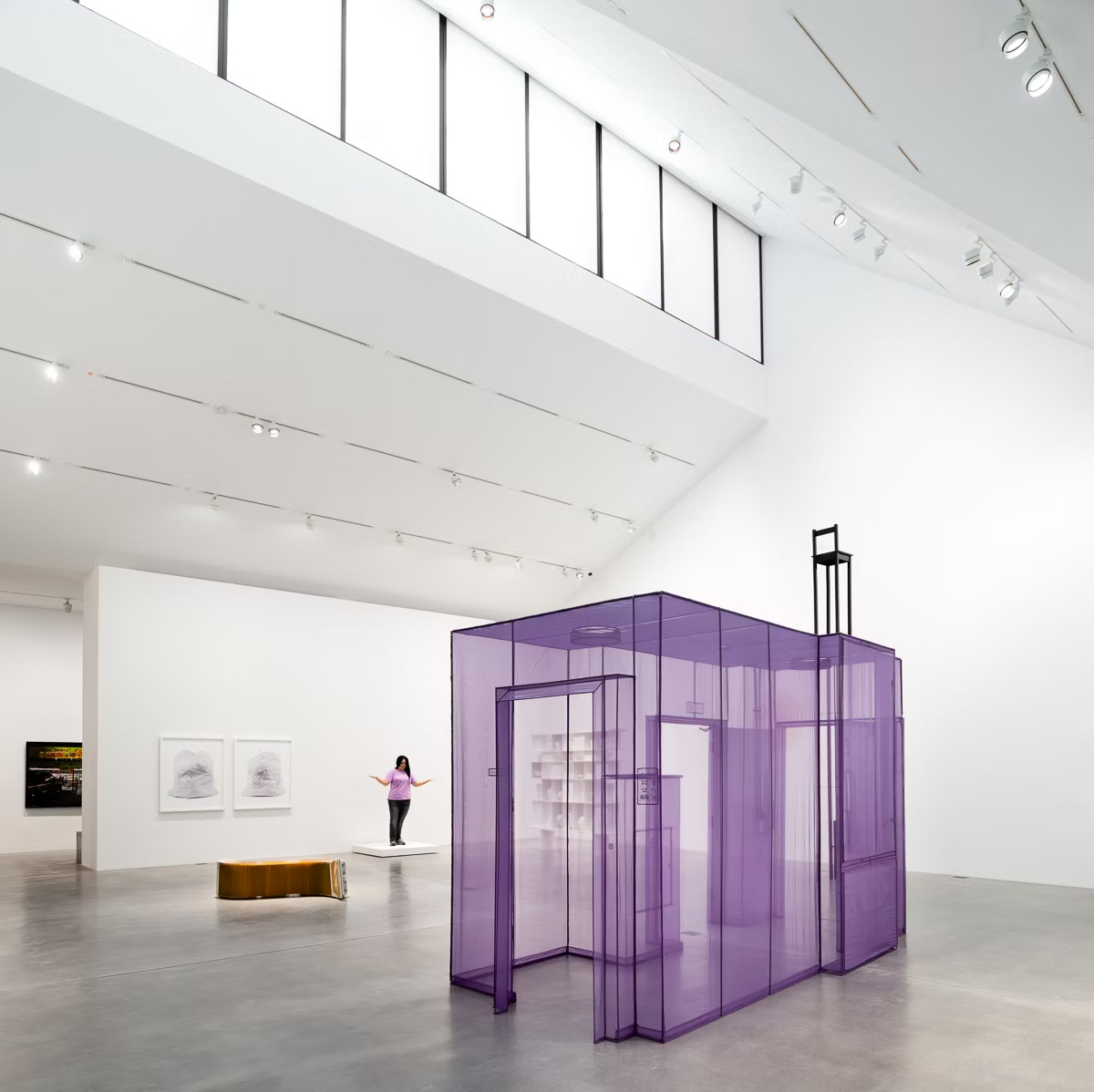
Upstairs, two artists offer different views of the night sky. In her work, Maya Lin often distills vast patterns of the natural world into evocative sculptures; here, she renders phases of the moon in smooth, shaped beeswax. The glowing light of Ana Fernandez’s painting of Los Valles Taquería y Frutería infuses a sense of significance to an otherwise ordinary scene of people gathering at a favored San Antonio eatery. Fernandez balances contrasts—of light and dark, work and rest, specific and general—to convey a mood of familiarity. Nearby, Teresita Fernández composes a wall relief of tinted, glass cubes that blurs its material form into an allusion of glowing light.
Ideas of home and the every day occur throughout Waking Dream. Often, formal distortions in material and scale transform familiar images into gently surreal objects. Christian Marclay’s outsized accordion with its extended bellows and Marina Abramović’s interactive sculpture, which features a typical chair coupled with a towering perch for a “spirit,” play with scale to a fantastic effect. Do Ho Suh’s sheer fabric structure—at once imposing and ineffable—recreates the artist’s memory of his London apartment. Rachel Whiteread’s negative cast of rows of books offers another version of memory and absence. Josiah McElheny’s display drains the color from the designs of two noted modernists, Charlotte Perriand and Carlos Scarpa, to both highlight and rewrite history. Alejandro Diaz’s life-sized depictions of stereotypes aimed at Mexican identity, likewise, evoke art history. Diaz updates Allen Jones’s figurative art- furniture from the 1960s to imply the commodification of Mexican- American culture.
Accumulation and absence are evoked in multiple works. Chuck Ramirez’s photographs of stuffed garbage bags capture the evidence of life being discarded. The translucent white of the plastic obscures the specific contents, creating a ghostly volume that suggests a cycle of resurrection. Rebirth and resilience are also indicated in Leonardo Drew‘s massive sculpture in which rusted, discarded materials are stacked into an unlikely rampart. Pace shapes countless decorative flowers into a single word: STAY.
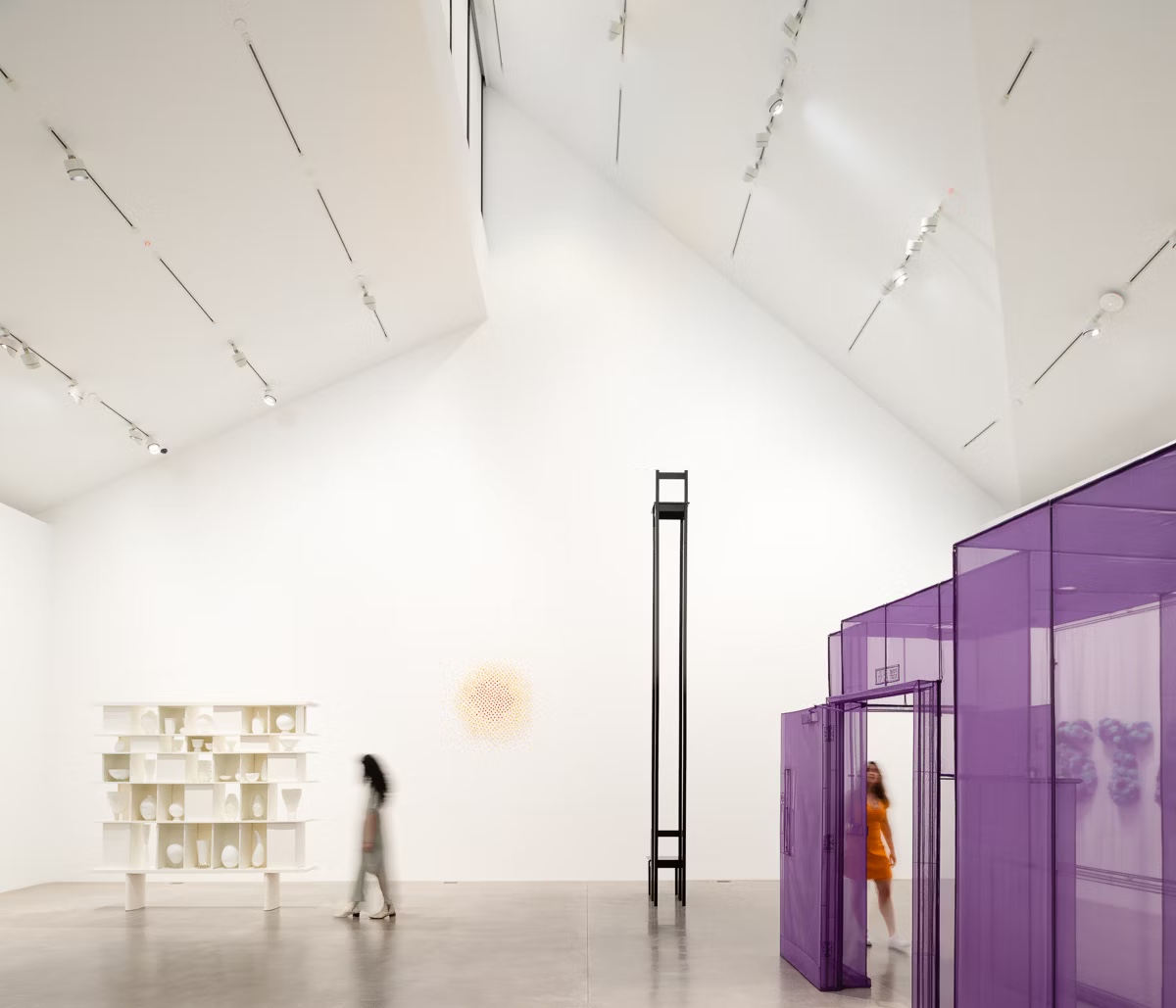
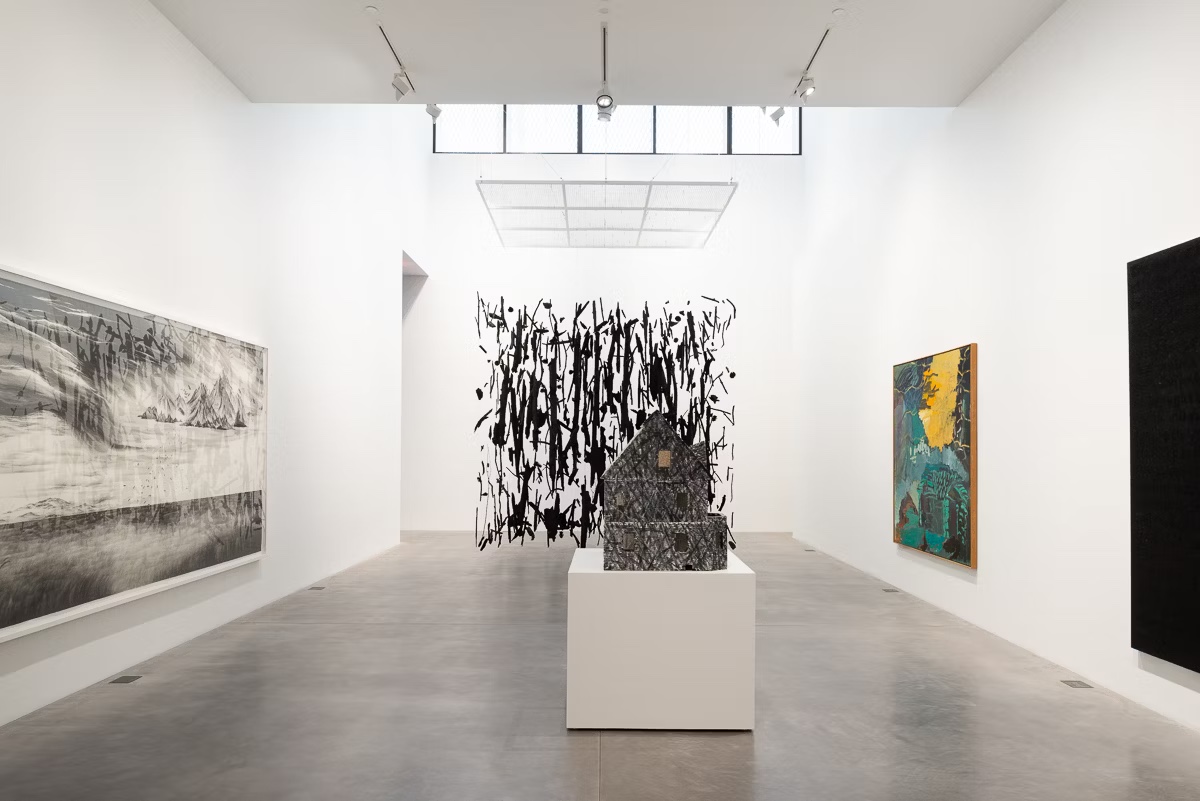
The artificial blooms, bright and saccharine, attempt to approximate and preserve the fleeting cycle of nature. Conversely, Ethel Shipton’s screenprints depicting highway signposts reference movement and the passage through time and space. The sequence reminds that proximity to one place is simultaneously distance from another, and that every exit is also an entrance.
Another current of Waking Dream speaks to the human conditions of vulnerability and resilience. Portentous imagery, a flickering candle and broken sky, evoke themes of death and desire in Lari Pittman’s complex composition. Robyn O’Neil’s epic drawing depicts an ominous landscape that suggests both struggle and the possibility of rebirth. On a more intimate scale, Kim Jones’ graphite marks camouflage the surface of a classic dollhouse handcrafted by the artist, effectively erasing the comforting image of family and play. Glenn Ligon’s black text painting simultaneously highlights and obscures a passage from “Stranger in the Village,” James Baldwin’s essay about race and difference. Isa Genzken’s collaged and reflective panel suggests a frenzy of urban and cultural overload, while Per Kirkeby’s robust abstraction reflects the artist’s connection to the land. Having completed a master’s degree in arctic geology prior to studying art, the artist has used geological terms, such as “collapsing structures,” to describe his manner of composing canvases. Cornelia Parker fosters a tension between destruction and resurrection in her charred wood sculpture. Parker suspends multiple burnt fragments from a Florida wildfire, which began as a controlled burn, into a blackened cube, highlighting notions of chaos and order.
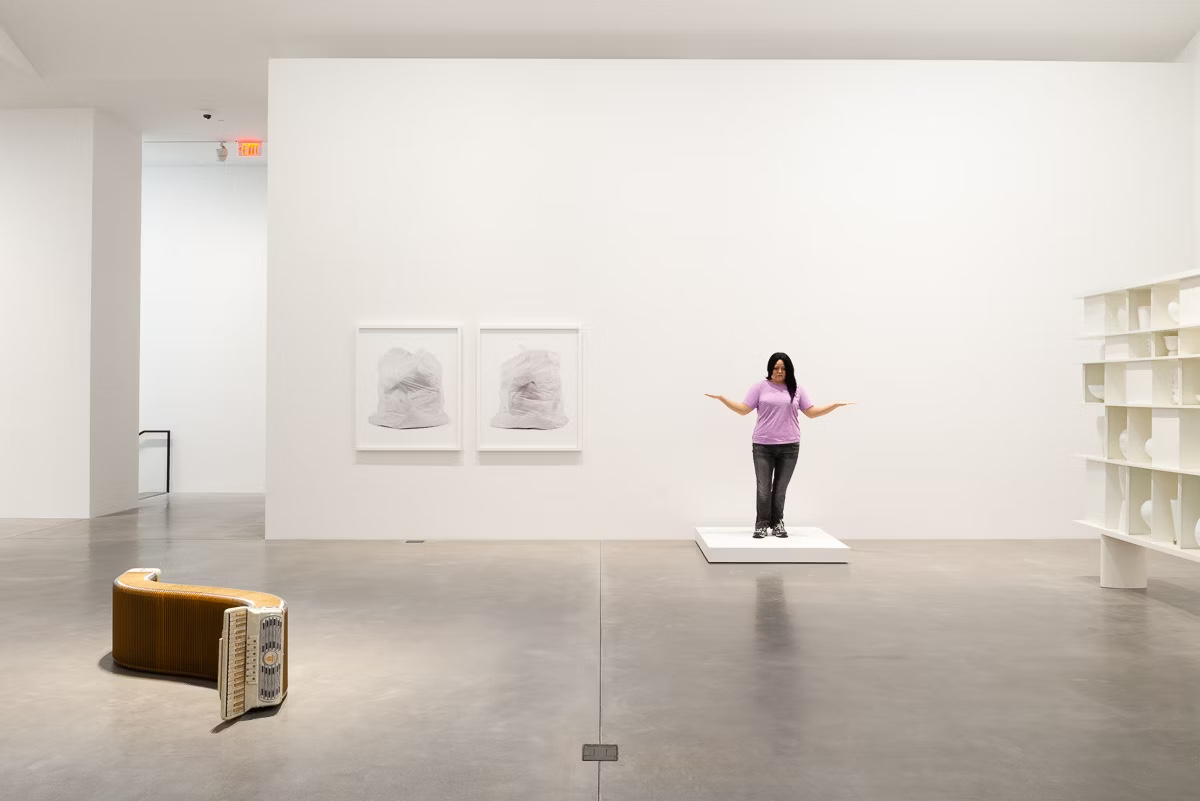
Linda Pace deeply admired the working processes and risk taking of other artists. Waking Dream highlights several artworks, which emphasize acts of creation and the image of the artist. Wangechi Mutu’s bronze sculpture suggests a self-portrait which combines African and modernist references, placing the artist within a global context. Cruz Ortiz’s painted portrait of fellow Texas artist, Jesse Amado, links two generations of makers within the San Antonio community and beyond. Nearby, Amado’s felt circles are at once bold, minimal forms and outsized allusions to the ubiquity and lure of prescription medications. Gillian Wearing restages snapshots of her youthful self as an aspiring artist. Wearing literally resituates herself within her former context, bending time from the exact place where, thirty years prior, she perhaps dreamed she would be.
Kathryn Kanjo
President, Linda Pace Foundation